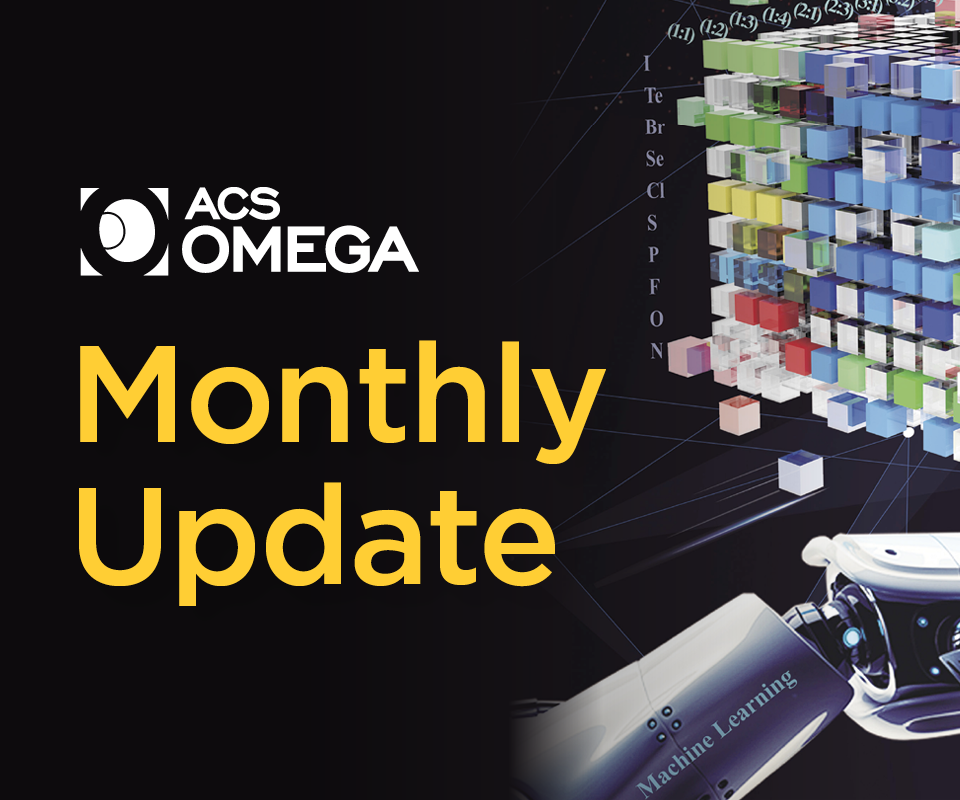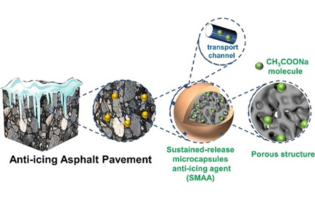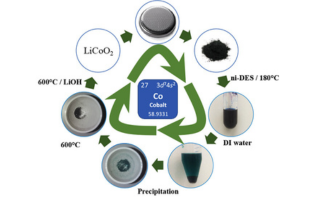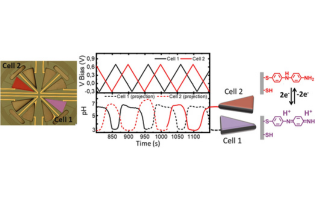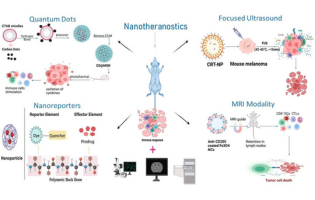What's New
Every year on 26 January, as part of the Republic Day celebrations in India, the highest civilian awards known as the Padma Awards are announced by the Government of India. This year, our very own Prof. K. N. Ganesh has been conferred with the 2023 Padma Shri Award in the field of Science and Engineering.
The coveted award comes to Prof. K.N. Ganesh in recognition of his rich contribution to the field of science education, research and institution building, as the founding Director of IISER Pune as well as IISER Tirupati.
Prof. Ganesh will receive the award in person during the ceremonial function to be held on 5th of April 2023.
We are looking forward to the award pictures!
Learn more about Prof. Ganesh's career journey and the start of the celebrations.
ACS Omega has, in the last five years, become the top journal for publishing content from Latin America in the entire ACS portfolio.
Check out our latest Virtual Issue, A Vista on Research Excellence from Latin America, and explore contributions from researchers from this area of the world.
Read the Virtual Issue Editorial, written by Jhoan Toro-Mendoza: Writing a New Chapter in a One-Hundred-Year-Old Partnership between Latin America and the American Chemical Society.
Feel free to use the banner below in your email signature and presentations!
ACS Omega - In The News
Researchers reporting in ACS Omega have filled microcapsules with a chloride-free salt mixture that is added into asphalt before roads are paved, providing long-term snow melting capabilities in a real-world test.
Reference: Yingfei Zhao et al, Preparation of a Green Sustained-Release Microcapsule-Type Anti-Icing Agent for Asphalt Pavement and Its Application Demonstration Project, ACS Omega (2023).
Some biopolymers, such as starch and lignin, are readily available as byproducts of other industrial processes and could serve as cheap bioplastic ingredients. Lignin's natural strength could help overcome starch's brittleness, especially when combined with a bio-based crosslinker.
Researchers reported in ACS Omega describe how they have obtained a plastic film that is tough, stable in water, yet will still break down when no longer needed.
Reference: Dickens O. Agumba et al, Ultrastrong, Hydrostable, and Degradable Straws Derived from Microplastic-Free Thermoset Films for Sustainable Development, ACS Omega (2023).
Researchers at Linnaeus University have developed a more environmentally friendly way of retrieving cobalt from used lithium-ion batteries. With a liquid solvent made of readily available substances, derived from urine and acetic acid, over 97 percent of the cobalt can be recovered. The researchers see good potential for large-scale application.
Reference: Subramanian Suriyanarayanan et al, Highly Efficient Recovery and Recycling of Cobalt from Spent Lithium-Ion Batteries Using an N-Methylurea–Acetamide Nonionic Deep Eutectic Solvent, ACS Omega (2023).
Key Journal Metrics
- ACS Omega published 328 articles in February. As compared to the equivalent timeframe in 2022, this represents a 19.2% increase in published output.
- Articles published in ACS Omega were downloaded 993,724 times in February. This represents a 44.5% increase in usage compared to the equivalent time period in 2022.
Published Issues
pp. 4430-5138
pp. 5139-6125
pp. 6126-7243
pp. 7244-8124
Featured Articles
In this article, Garcia et al., present the miniaturization of a device able to produce large acidity contrasts in confined microreactors and maintain it for times much longer than what the diffusion of the protons in free space would allow. The new device contains four electrochemical cells with each containing working, reference, and counter electrode cells separated by diffusion barriers. The achieved performance in acidity control, miniaturization, and the possibility to multiplex paves the way for the control of combinatorial chemistry through pH- and acidity-controlled reactions.
César Pascual García, et al., Luxembourg Institute of Science and Technology (LIST), Luxembourg; MESA+ Institute, University of Twente, Netherlands
ACS Omega 2023 8 (8), 7587-7594
The resistance of immunotherapy is more complex because tumors exist in a dynamic tumor microenvironment (TME). Understanding the TME, which comprises immune cells, is crucial for increasing response rates and creating novel therapeutic approaches for immunotherapy-based cancer treatment since immune cells constitute the biological basis of this approach. The outcomes from animal studies demonstrated an improvement in the diagnostic and immunotherapeutic potential of nanoparticles within the theranostic framework. In this review, the authors discuss the most recent developments in the application of nanotheranostics for combining tumor imaging and cancer immunotherapies.
Ahmed O. Elzoghby, et al., Alexandria University, Egypt
ACS Omega 2023, 8, 4491−4507
Sustainable textile production can benefit from natural (and biobased) dyes because they are of renewable origin, biodegradable, and often less harmful compared to synthetic ones. However, the efficiency of their extraction and purification needs to be considered in detail as well as how to firmly attach them to the fabrics in a sustainable manner. The ultimate goal of gaining a better understanding of these issues is to make natural dyes and mordants an economically viable option. In this work, an analytical study was carried out to gain a more detailed understanding of the dyeing process on cellulosic materials. Chitosan showed high potential as a biobased mordant based both on its ability to facilitate fast adsorption of polyphenols to cellulose and its ability to retain the purple color of the red onion dye (ROD) in comparison to the metal mordants FeSO4 and alum.
Monika Österberg, et al., Aalto University, Finland; Craft Science, University of Helsinki, Finland
ACS Omega 2023, 8, 5451−5463
The Zika virus (ZIKV) is a single-stranded, positive-sense RNA virus belonging to the flavivirus genus along with the West Nile virus, dengue virus, yellow fever virus, and tickborne encephalitis virus. Polymers are employed in therapy as polymer−protein conjugates, drug−polymer conjugates, gene delivery systems, drug delivery systems, among other applications. Notably, polymers, both synthetic and natural, are effective antiviral inhibitors as shown in numerous studies. The copolymers synthesized and reported here inhibit ZIKV replication in vitro in mammalian cells at nontoxic concentrations. It is plausible that these complexes will be dispersed in aqueous media, possibly also in the blood plasma, and stabilized via repulsive electrostatic forces.
Maria Nowakowska, et al., Jagiellonian University, Krakow, Poland
ACS Omega 2023, 8, 6875−6883
Considering that the success rate of clinical translation of many nanotechnological solutions, often too complicated, remains relatively low, the strategy of taking advantage of simpler nanomedicine platforms could be a winning choice. Ferritin (Fn) is one of the most studied proteins and in nature is responsible first for the maintenance of intracellular iron concentrations and also for protection from oxidative stress. This contribution aims at providing an overview of the significant efforts expended during recent years to maximize the features of HFn in terms of increased stability and in vivo circulation. The most considerable modification strategies explored to improve bioavailability and pharmacokinetics profiles of HFn-based nanosystems will be discussed herein.
Serena Mazzucchelli, et al., Università degli Studi di Milano, Italy
ACS Omega 2023, 8, 7244−7251
Previous Newsletters
Click below to view a previous ACS Omega Monthly Update:
© 2025 American Chemical Society, 1155 16th St NW, Washington, DC 20036, USA. View our Privacy Policy


